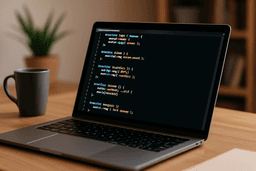Detect if Element is in Viewport: The Spotlight Effect
Learn a JavaScript snippet to check if an element is in the viewport, with a spotlight analogy for lazy loading and animations.

Shashank

Detect if Element is in Viewport: The Spotlight Effect
Imagine your webpage as a stage, with elements waiting for their moment in the spotlight—the user’s viewport. Detecting when an element is visible lets you trigger animations, load images lazily, or track views. This snippet shines a light on elements in view, enhancing performance and engagement. Let’s put your elements center stage!
The Snippet
Here’s a function to check if an element is in the viewport:
function isInViewport(element) {
const rect = element.getBoundingClientRect();
return (
rect.top >= 0 &&
rect.left >= 0 &&
rect.bottom <= (window.innerHeight || document.documentElement.clientHeight) &&
rect.right <= (window.innerWidth || document.documentElement.clientWidth)
);
}
const el = document.querySelector('#myElement');
console.log(isInViewport(el)); // Output: true or false
This checks if an element is fully within the viewport’s boundaries.
How It Works
The getBoundingClientRect method returns an element’s position relative to the viewport:
| Property | Meaning |
|---|---|
top | Distance from viewport top |
left | Distance from viewport left |
bottom | Bottom edge position |
right | Right edge position |
The function checks if the element’s edges are within the viewport’s dimensions (window.innerHeight and window.innerWidth).
A Modern Alternative: IntersectionObserver
For more robust detection, use IntersectionObserver:
function observeElement(element, callback) {
const observer = new IntersectionObserver((entries) => {
entries.forEach(entry => {
if (entry.isIntersecting) {
callback(element);
}
});
}, { threshold: 0.1 });
observer.observe(element);
}
observeElement(document.querySelector('#myElement'), (el) => {
console.log(`${el.id} is in view!`);
});
IntersectionObserver triggers when 10% of the element (threshold: 0.1) enters the viewport, ideal for animations or lazy loading.
A Real-World Scenario
Suppose you’re building a gallery with lazy-loaded images:
document.querySelectorAll('img.lazy').forEach(img => {
observeElement(img, () => {
img.src = img.dataset.src; // Load image
img.classList.remove('lazy');
});
});
Images load only when they enter the viewport, saving bandwidth.
Use IntersectionObserver for performance, as it’s more efficient than polling with getBoundingClientRect.
Why It Matters
Viewport detection powers lazy loading, animations, and analytics. Ever wonder why some sites load images as you scroll? This technique is the secret. It keeps your app fast and engaging.
The Future of Viewport Detection
IntersectionObserver is the gold standard, with growing support for advanced features like partial visibility tracking. As web performance becomes critical, these patterns will dominate.
What elements will you spotlight? Try this snippet to bring your page to life.
